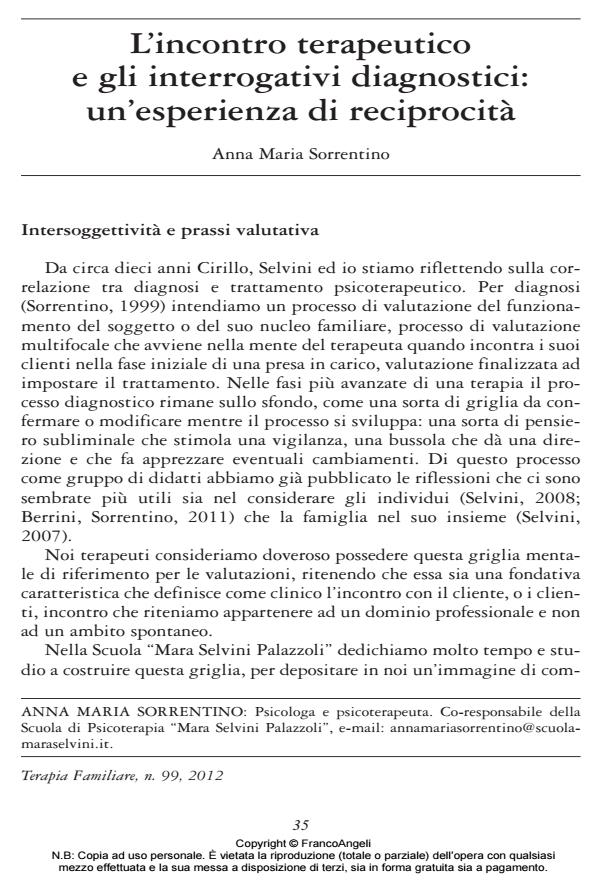L’incontro terapeutico e gli interrogativi diagnostici: un’esperienza di reciprocità
Journal title TERAPIA FAMILIARE
Author/s Anna Maria Sorrentino
Publishing Year 2012 Issue 2012/99
Language Italian Pages 19 P. 35-53 File size 694 KB
DOI 10.3280/TF2012-099002
DOI is like a bar code for intellectual property: to have more infomation
click here
Below, you can see the article first page
If you want to buy this article in PDF format, you can do it, following the instructions to buy download credits

FrancoAngeli is member of Publishers International Linking Association, Inc (PILA), a not-for-profit association which run the CrossRef service enabling links to and from online scholarly content.
In the present study the author describes her own mental process occurring during taking charge of patient in order to provide guidance to younger colleagues on formulating the appropriate diagnostic hypotheses for treatment. The encounter between therapist and patient is described in its intersubjective matrix where two people focus on each other. For the therapist this process goes through several levels of analysis, which can be described as attention to analogical aspects of communication, to interpersonal style connected to the attachment patterns experienced and to the family and personal history. This process is illustrated by clinical case presentations stressing underscoring transference feelings.
Keywords: Analogical language, interpersonal style and defences, caregiving and family history, therapist’s feelings.
- La terapia sistemica online: tecniche e strumenti Flavia Risari, in TERAPIA FAMILIARE 127/2022 pp.7
DOI: 10.3280/TF2021-127002 - L’équipe, base de sécurité de l’expérience des formats en thérapie familiale Stefano Cirillo, Matteo Selvini, Anna Maria Sorrentino, in Cahiers critiques de thérapie familiale et de pratiques de réseaux /2021 pp.143
DOI: 10.3917/ctf.066.0143
Anna Maria Sorrentino, L’incontro terapeutico e gli interrogativi diagnostici: un’esperienza di reciprocità in "TERAPIA FAMILIARE" 99/2012, pp 35-53, DOI: 10.3280/TF2012-099002